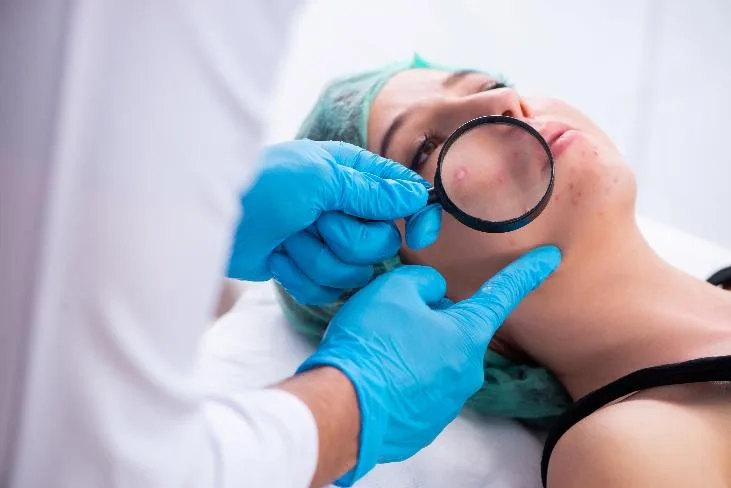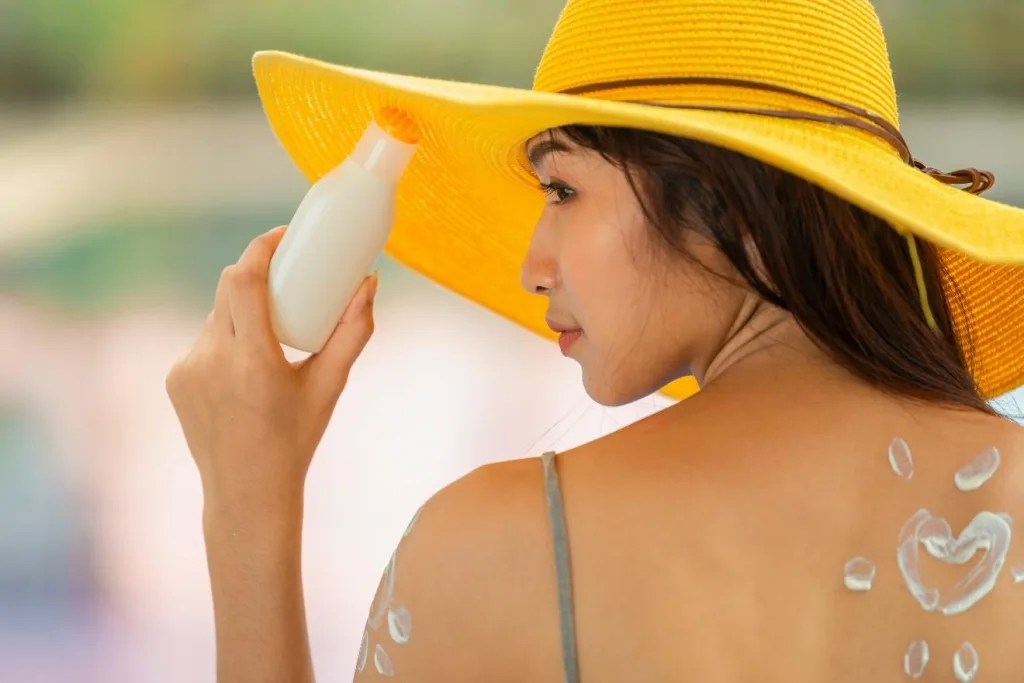Value at your desk. Contact Us
Jarische Frances S. Lao-Ang, MD, FPDS
Skincare is for everyone, but is it different between men and women? We’re all familiar with the saying “skincare is for all ages”, but how about skincare for all gender?
To find out, let’s first know the structural differences between male and female skin.
Now that we know the structural differences between men & women, must there be a difference when it comes to skincare?
Unique skincare need for men: Facial hair
by Michelle-Adeline Noche-Apacible M.D, FPDS
What You Need to Know about Moisturizing
by Michelle-Adeline Noche-Apacible M.D, FPDS
Why is it important to moisturize?
“I don’t need to moisturize because I only have oily skin.” This is just one of the many myths surrounding moisturizing. The most important truth you need to know about moisturizing is simple- it’s extremely important for the skin’s integrity and appearance. Moisturizers come in different types and contain various components but they mainly improve skin hydration and enhance skin barrier repair. They target the stratum corneum, the outermost layer in the epidermis, necessary for retaining hydration. Its structure is the most important contributor in the overall moisturizing level.

These involve four key processes namely corneocyte, stratum corneum lipid, natural moisturizing factor (NMF), and desquamation. All these processes aim to lead to the formation of an efficient moisture barrier. First, Corneocytes serve as the stratum corneum’s physical barrier by regulating water flux and retention. Next, stratum corneum lipids block external compound invasion and provide a barrier to water movement. Then, the natural moisturizing factor maintains the corneocytes’ hydration. Lastly, in desquamation, stratum corneum with a lack of moisture functions much less efficiently. This is why moisturizers step in to make sure that all these four processes are fulfilled.

When these processes are successfully carried out, the level of stratum corneum hydration significantly increases. Moisturizers do this by directly providing water to the skin and increasing occlusion to mitigate trans-epidermal water loss. Your skin’s appearance is positively affected because it smoothens the skin’s surface.
How do you choose the right moisturizer?
Choosing the right kind of moisturizer is not an easy task. It’s very easy to be overwhelmed with the sea of moisturizers being sold. Here are a few tips to find your skin’s match.
First, consider the factors that make a reliable moisturizer. These are particularly the natural moisturizing factor, ceramides and aquaporins (AQPs). Ceramides, a class of lipids, are essential building blocks of epidermal barrier structure. They also contribute to epidermal self-renewal and immune regulation. Aquaporins which come in many types contribute to water transport to the epidermis and hydration. For example, moisturizers with APQ3 spread both water and glycerol around the epidermis. It has also been proven to improve lipids’ metabolism which greatly contributes to the skin’s moisture.
Second, consider what your skin needs. Maybe if your skin is sensitive, you should avoid occlusives which can cause irritation. If your skin is dry, you should try a moisturizer with both an occlusive and humectant. This is because your skin may not have the protein-binding capacity to trap and retain moisture. Watch out for moisturizers with alcohols or fragrances as this may make your skin’s condition worse.
Lastly, consult with a board-certified dermatologist. Only a board-certified dermatologist will be able to recommend the most suitable moisturizer for your skin. They also have the necessary expertise in the different types of moisturizers and their respective mechanisms of action.
What are the kinds of moisturizers?
These usually come in three main kinds- emollients, occlusives, and humectants. Each has their own unique function that benefits your skin. Emollients, commonly used in topical pharmaceuticals, seal water into the skin. These provide a stronger skin barrier and appearance. Humectants on the other hand increase water absorption from the dermis into the epidermis where evaporation is easily possible. Occlusives have the most important effect when applied to wet skin since they prevent water from escaping the skin. These come in mineral oils, petroleum jelly and much more.
All of us have different skin types. Some people’s skin has a stronger ability to maintain moisture while others lack it. It is necessary for your skin’s health no matter the type. Moisturizers do this for you. Don’t let them sit in your vanity cabinets. Know what they do and integrate it into your skin care routine today.
Sources:
Visscher, M. O. (2003). Effect of soaking and natural moisturizing factor on stratum corneum water-handling properties. PubMed. https://pubmed.ncbi.nlm.nih.gov/12858228/
Coderch, L. (2003). Ceramides and skin function. PubMed. https://pubmed.ncbi.nlm.nih.gov/12553851/
Purnamawati, S., Indrastuti, N., Danarti, R., & Saefudin, T. (2017). The Role of Moisturizers in Addressing Various Kinds of Dermatitis: A Review. Clinical Medicine & Research, 15(3-4), 75–87. https://doi.org/10.3121/cmr.2017.1363
Draelos, Z. D. (2013, June 19). Modern moisturizer myths, misconceptions, and truths. PubMed. https://pubmed.ncbi.nlm.nih.gov/23837155/
Li, Q. (2019, December 5). The role of ceramides in skin homeostasis and inflammatory skin diseases. PubMed. https://pubmed.ncbi.nlm.nih.gov/31866207/
Boury-Jamot, M. (2009). Skin aquaporins: function in hydration, wound healing, and skin epidermis homeostasis. PubMed. https://pubmed.ncbi.nlm.nih.gov/19096779/
Smeden, J. (2016). Stratum Corneum Lipids: Their Role for the Skin Barrier Function in Healthy Subjects and Atopic Dermatitis Patients. PubMed. https://pubmed.ncbi.nlm.nih.gov/26844894/
Rawlings, A. V. (2004). Moisturization and skin barrier function. PubMed. https://pubmed.ncbi.nlm.nih.gov/14728698/
Jarische Frances S. Lao-Ang
What is a dermatologist?
A dermatologist is a medical doctor who specializes in managing skin, hair and nail conditions.
Dermatologists undergo several years of training to be able to help people. They take care of both adults and children. They manage not only eczemas and skin infections, but also cosmetic concerns.
What training does a dermatologist undergo?
What is a board-certified dermatologist?
After accomplishing the residency training, dermatologists take the diplomate board exam under the Philippine Dermatological Society (PDS). Once they pass the exam, they are board-certified dermatologists and are considered diplomate of PDS. They can now practice and hold clinics.
A person will be able to know if a practitioner is a board-certified dermatologist of PDS by looking at the attached DPDS or FPDS after their name. Aside from checking the names, one may verify by checking at the PDS website.
Subspecialty under dermatology
A dermatopathologist has one more year of training in pathology in which he or she is trained to identify biopsied skin samples under a microscope and make differential diagnosis of the skin concern involving the biopsied area.
An immunodermatogist is an expert in diagnosis and treatment of skin disorders characterized by defective responses of the body’s immune system. The most common immunologic skin condition are bullous diseases. They are also experts in evaluating immunofluoresnce readings for the correct diagnosis and treatment.
A photodermatologist has further training in UV-induced skin conditions and phototherapy (the use of UV light in managing skin conditions such as psoriasis, atopic dermatitis).
A dermatologic surgeon has expertise in doing surgical medical and cosmetic procedures.
Mohs surgery is a further subspecialty in dermatologic surgery where the expert performs surgery to manage skin cancer. It is a method wherein thin layers of skin are removed sequentially after examining in the microscope until the area is cancer-free. It aims to lessen the removal of normal healthy skin.
A laser specialist is an expert in using energy-based devices for managing skin conditions. They evaluate people and determine the recommended laser and wavelength to manage the particular skin concern.
A pediatric dermatologist is an expert in managing infants and children. Some conditions are encountered more in children such as a unique birthmark, vascular anomalies or neurocutaneous disease among others.
An environmental dermatologist specializes in the external triggers for skin irritation and allergy. They are experts in occupational and recreational related skin conditions and are also trained in performing clinic-based patch testing.
A leprosy subspecialty is an expert in handling and managing this mycobacterial infection.
STI experts are keen in diagnosing and managing sexually-transmitted condition. They handle cases such as syphilis, herpes, and HIV.
Why choose a board-certified dermatologist?
A board-certified dermatologist is a well-trained medical professional who gives evidence-based management to any skin, hair or nail concerns. It is best to seek consult with them for any skin concern for timely and proper treatment.
Dr. Carla Perlas, FPDS
What is Psoriasis?
A disease that is characterized by inflammation caused by dysfunction of the immune system also called immune-mediated disease which causes inflammation in the body. A raised plaques and scales on the skin are mostly the visible signs of the inflammation.
The World Health Organization (2014) classified psoriasis as a chronic non-communicable disease, emphasizing the distress caused by misdiagnosis, inadequate treatment, and stigmatization of this disease.
What causes Psoriasis?
Although the exact cause of psoriasis is unknown, several factors such as genetics, environmental triggers, and your immune system can all play a role. As a result, psoriasis is not contagious and cannot spread from person to person.
Because of the overactive immune system that speeds up skin cell growth, the immune system and inflammation play a role in psoriasis. Normal skin cells grow and shed in a month, but in psoriasis, skin cells grow and shed in only (3) three or (4) four days, and instead of shedding, the skin cells pile up on the skin’s surface whereas, the genetics of psoriasis are complex, and it is possible to develop psoriasis even if you have no family history of the disease, as well as a triggering event may cause a change in the immune system, resulting in the onset of psoriasis symptoms, this may vary from person to person, and what may worsen your psoriasis may have no impact on someone else.
Common psoriasis triggers include;
A great way to learn about your unique set of triggers is to track them over time. Keeping records of your symptoms and triggers can help you anticipate and treat your flares.
Locations and Types of Psoriasis
Psoriasis can appear anywhere on the body even on the scalp,face ,skin folds, hands, feet and nails. Plaques can be a few small patches or can affect large areas and it’s also possible to have psoriasis plaques and scales in more than one location on the body at a time.
There are five types of Psoriasis
Plaques typically appear symmetrically on the body, affecting the same areas on the right and left sides of the body. Plaque psoriasis frequently coexists with nail psoriasis, which manifests as discoloration, pitting, or separation of the nail from the foreskin.
What are the treatment used for Psoriasis?
The type and number of treatments involve are determined by the severity of your psoriasis that is determined by how much of your body it covers.
Finding the right psoriasis treatment and understanding the severity of your psoriasis and different treatment options can help you and your dermatologist work toward meeting your treatment goals. This includes the following;
Last June 24, 2021, the Food and Drug Authority issued a public health warning on three cosmetic products:
1. The Ordinary Niacinamide 10% + Zinc 1% High-Strength Vitamin and Mineral Blemish Essence
2. The Ordinary AHA 30% + BHA 2% Peeling Solution
3. The Ordinary Hyaluronic Acid 2% + B5
The FDA issued Advisory No.2021-1543 warning the public to avoid purchasing the said skincare products because of failure to undergo through the agency’s registration process. Without undergoing proper registration and validation, FDA cannot assure the public on the products quality and safety.
The Food and Drug Administration (FDA) warns the public from purchasing and using the unauthorized cosmetic products.
Read more:-> https://bit.ly/3eDHjj1
By Aznaida L. Tawagon-Pandapatan, MD, DPDS
What are Retinoids?
Retinoids are Vitamin A derivatives. Use of retinoids results to the most sought-after reversal of skin aging.
How? By organized differentiation and proliferation of skin cells. Think of it as like an organic fertilizer for plants—once applied to the soil, the leaves and fruits will grow faster and with a better quality.
When applying retinoids, skin cells will grow faster and better (like how your skin used to be when you were younger) and collagen will start to form in your skin dermis, so you can get back that youthful smooth, firm, and glowing skin.
Currently there are four generations of retinoids:
Naturally-occurring: Retinol & Retinaldehyde
Synthetic: Tretinoin, Isotretinoin, and Alitretinoin
What are their uses?
Retinoids are most famous as anti-acne and anti-aging, but amazingly in the medical field, they are also used for other diseases such as in psoriasis, hyperkeratotic conditions and even for cancers. Here we discuss their anti-acne, anti-aging, and anti-melasma actions.
Retinoids have been used for acne vulgaris (pimples) since 1971. Topical Tretinoin & Adapalene are the preferred retinoids for acne.
These retinoids do their superhero work by normalizing the follicular epithelial differentiation, thus treating the existing pimples and also preventing future pimples to form. New studies also showed that topical retinoids have an anti-inflammatory activity thus further decreasing pimple occurrence.
Adapalene causes less irritation compared to tretinoin, thus it is commonly prescribed for those with sensitive skin and those who cannot tolerate Tretinoin.
Retinols are milder forms of retinoids. Examples are retinaldehyde & retinyl palmitate. These may be advised for those who cannot tolerate the use of Adapalene & Tretinoin. Studies showed satisfactory results with these retinols, although effects can be slower and milder compared to adapalene and tretinoin.
Oral Isoretinoin (tablet form) is prescription-only and is used for moderate to severe acne that cannot be successfully controlled by creams. Therapy usually lasts for 6 months, and when acne has been controlled, this is shifted by your Dermatologist to topical retinoids as maintenance.
As anti-aging, Tretinoin has been shown to give superior results overall. Fine wrinkles and brown spots are the two targets of retinoids as anti-aging.
Brown spots or Dyspigmentation], which happens in photoaging, can be treated by retinoids, partially or fully, depending on how severe it is. This is through enhancement of proper cell turn-over of the epidermis, thus shedding off of the darkened/damaged skin cells on top.
Wrinkles can be improved by retinoids by enhancing cell regeneration of the topmost skin layers and by production of new collagen in the dermal layer (lower layer of the skin). This effect on collagen can usually be observed after 6-12 months of regular use.
Melasma has 3 types: EPIDERMAL (affecting the topmost skin layers), DERMAL (affecting lower skin layer), and MIXED epidermal+dermal (affecting both the top and lower layers).
Epidermal type of melasma can be improved by retinoids by enhancing regeneration of new skin cells, thus effectively removing the topmost pigmented cells. Improvement can be 80-100%.
In Mixed type of melasma, the epidermal component can be treated by retinoids by the same mechanism mentioned above, but the lower dermal component does not usually respond to this. Thus the patient can only see a partial improvement of their melasma, about 50-60% improvement.
Dermal type of melasma is difficult to manage with just topical retinoids, it is managed with multiple approaches using lasers and other topicals.
Retinoids can be combined with other treatment modalities to optimize melasma treatment.
What are the possible side effects of retinoids?
Like many medications, retinoids may have side effects, some are mild and some are severe especially for the first-time users. Here are some of them:
Do not let these side effects turn you off from using retinoids. Most of these effects
will usually resolve on their own once the skin adjusts. But for those with severe side effects, your dermatologist will prescribe medications to lessen the effects and guide you when and how to re-introduce it to your regimen.
Tips on proper use of retinoids and how avoid undesirable effects.
Myths about retinoids in skincare:
Facts about retinoids in skincare:
References
Danielle Nicolle Dionisio Mejia, MD, DPDS
Martha Joy Bruan-Tapales, RPh, MD, FPDS
The science of prescribing medication is second nature to physicians. The therapeutic relationship between a patient and a doctor is founded in mutual trust that the patient will follow the regimen prescribed by the doctor. However, in therapeutics, there are unintended events that may occur anytime during treatment.
The World Health Organization (WHO) defines adverse drug reaction (ADR) or effect as an individual’s response to a drug which is noxious or unintended occurring at doses normally used in man for the prophylaxis, diagnosis, or therapy of disease, or for modifications of physiological function. In addition, the US FDA describes it as an undesirable effect associated with the use of a drug that may or may not be related to its intended pharmacological action. In short, ADR is harm caused by the drug at normal dose during normal use.
The classification of ADRs can be divided according to the following:
Side effect, a type of ADR that is most commonly discussed with patients, is defined as the unintended and sometimes unavoidable effect occurring at normal dose related to the pharmacological properties. The drug’s side effects are usually listed down by the drug manufacturers for the physicians to know and relay to the patient. Examples of drug side effects would be hair loss and oral ulcers with the use of cancer medication; burning or stinging sensation with the use of topical retinoids or topical calcineurin inhibitors; nausea and vomiting with the intake of doxycycline. Since side effect is a response related to the pharmacological properties of a drug, some would include in the definition effects that are beneficial to the patient even though it is not the main aim of therapy.
Adverse drug reaction or adverse drug effect, therefore, is the umbrella term for all undesirable effects of a medication, whether it is expected or not and to some whether it is good or bad.
The long term safety of a drug can only be determined once it is being widely used by the public. Monitoring adverse drug reactions from medications is important to safeguard the public from these effects. Timely reporting of ADRs is vital and healthcare workers can not do this without the help of the public. Proper health education and efficient communication between the healthcare workers and patients is important to allow prompt monitoring of these unwanted drug related events.
References:
Tanya Perez-Chua, MD, FPDS
The topic Skin Care on a Budget is very interesting and tricky. Budget is always relative. What is affordable to you, may not be affordable to me. To make your budget work, I will also give advice on how to spend wisely. I have seen thousands of patients over the years and the following are my thoughts as a board-certified dermatologist and dermatopathologist.

Asking for the expert’s opinion will save you a lot of time, money and effort. Since they are highly trained, they will give you the most effective medications that may include oral, topical and even injections. There won’t be a need to try so many products. Everytime you purchase a new cream or supplement, you spend money and worse, you will get frustrated if you do not get your desired result. Spare yourself those and just consult a dermatologist. Make sure you are consulting a legit dermatologist. Professional fees vary. The Philippine Dermatological Society has training institutions that gives real treatment and proper prescriptions at professional fees that are almost for free!

So many products from all over the world are now very accessible to everyone. But remember, what is popular may not work for you. When we see advertisements, the photos and “feedback” are always impressive. However, you do not really know the truth behind these. Always think twice before grabbing another product.
I am not fond of cleansers with a lot of active ingredients. I only recommend special cleansers for those with severe cases of atopic dermatitis and other eczemas. For cases of pimples, I choose a simple soap or liquid cleanser – one that would not harm the skin. I do not depend on soaps and cleansers to cure pimples, dark spots, and scars.

It is a rule to always apply sunscreen. The dark spots on your face will not go away without protecting yourself from the skin. The wrinkles will continue to form faster because of the sun! If you want to age beautifully, the minimum requirement to achieve this is to put sunscreen. I do not like sunscreens that incorporate other active ingredients. Sometimes, these may even cause a contact dermatitis. As I always tell my patients, choose a simple and effective sunscreen.

I have noticed that a lot of consumers gravitate to goods that peel dramatically. I encounter these people when they go to my clinic and realize that the “peeling” actually burned their skin after using these products. I always warn my patients about these. Unfortunately, such strong products are also widely available in stores and online.
On the other hand, some over the counter products may work! Ask your dermatologist if they would approve of those. Yes, you may need some guidance in choosing over the counter products.

A simple skin regimen would not break the bank. A simple regimen will be effective and safe! I am also not a fan of having to apply so many things on our faces and bodies. A simple regimen may need oral medicines and you really have to consult your board-certified dermatologist for this.
When you have a skin problem that you think is hopeless or might be too expensive to treat, choose to consult a board-certified dermatologist! Do not waste your time and money buying so many products. We will talk and solve your skin concerns, keeping your budget in mind.

Dr. Aenelle B.Dizon FPDS
Caring for one’s skin is all about taking care of one’s self. It is not considered an indulgence but more of a necessity. The main goal of having a skin care routine is to maintain the skin’s function at its best, with no irritation or any signs of skin disease.
Before starting a skin care routine, it is important to identify and understand one’s skin type. This will help in one’s choice of products to use.
As dermatologists we agree that more is not always better and a basic skin care routine is as easy as a three-step procedure of cleansing, moisturizing and protecting.

CLEANSING – Washing the face is the most basic and essential step in any routine. Our skin is constantly exposed to pollutants, dirt, oil, make up and all of these should be gently removed. Washing the face two times a day (morning and night) is basic. Finding the right cleanser with the right formula is important. A product that is fragrance free, gentle and cleanses without stripping the essential moisture of the skin is ideal for everyday cleansing according to skin type. Here is a simple guide;
NORMAL skin – Soap free cleanser or a micellar water is suitable for most people with normal skin
OILY or Acne prone skin- Look for a foaming liquid with no added emollients and one which can decrease sebum from the skin
DRY skin – Look for cream cleansers that are formulated with emollients to help hydrate the skin

MOISTURIZING- Moisturizing the skin is an important step in a skin care routine. A moisturizer traps water in the skin and is best applied to damp skin at least 2 x daily. They can also complement the naturally protective oils within the skin. It is recommended to moisturize one’s skin regardless of skin type because the skin naturally loses its ability to retain moisture especially as we age. Or as we engage in daily activities such as washing the face frequently can strip off the natural moisture from the surface.
Here is a guide on how to choose a moisturizer according to skin type:
For OILY Skin – Choose a gel moisturizer, it is usually water based, lightweight and has quick absorption.
For DRY Skin – a cream moisturizer is ideal
For NORMAL Skin- Lotion form is the classic moisturizer level which absorbs well
PROTECTION – Protecting the skin with sunscreen is a crucial part of a skin care routine. Daily and consistent use of sunscreen helps to prevent fine lines, wrinkles, age spots and certain skin cancers. In choosing the ideal sunscreen look for a product that is broad spectrum which means it can provide protection from both UVA and UVB rays and with little risk of irritation or health concerns. It is recommended to use sunscreen with a minimum spectrum SPF of at least 30.
Sunscreen application 101
Apply sunscreen 30 minutes before sun exposure and re apply at least every two hours. Make sure to apply enough sunscreen to appropriately cover the entire face and exposed areas of the body
Besides the basic steps of cleansing, moisturizing and protecting additional extra steps can be done as needed. These are products which one can add to the basic skin care routine mentioned above. These can be in the form of toners, serum, exfoliants, or masks to target a more specific skin concern. A general rule of thumb I s to apply the products with thinner consistency underneath the thicker ones. Face masks can be used periodically not more than once or twice per week.
As you choose products for your skin care routine, stick to key, important active ingredients and avoid experimenting too much, be consistent and wait for the skin products to work on the skin by maintaining for at least 2-3 months. Except if it causes allergic or adverse reaction, then it is warranted to stop the product right away.
Consistency or doing the skin care routine regularly is key to having a good, well-maintained skin.
Reagan Grey T. Reyes, MD, DPDS
Board-certified dermatologists are known to be the leading experts when it comes to skin, hair and nails. While this is true, dermatologists are also aware and recognizable of sexually transmitted infections, which refer to a variety of infections that can be acquired and transmitted through sexual contact.
Because of their typical skin symptoms (genital discharge, ulcers, lumps/bumps, itchiness), dermatologists are the first line physicians who are sought after by patients with sexually transmitted infections (STIs). It is important to keep in mind that both the doctor and the patient play a critical role in preventing and treating these common STIs.
List of common STI’s in Dermatology according to symptom:
-Genital Discharge:
Diseases presenting with genital discharge may also present with burning and painful urination. Gonorrhea is caused by the bacteria neisseria gonorrhea, while chlamydia is caused by the bacteria chlamydia trachomatis. They are transmitted sexually and also from infected mother to child.
Chlamydia presents with a less profuse and less purulent discharge than neisseria. Both diseases are treated with oral antibiotic therapy. Recent sex partners within 60 days should be referred for testing and presumptive antibiotic treatment. Other causes of genital discharge in women include: bacterial vaginosis, trichomonas vaginalis and candidiasis.
-Ulcers:
Genital ulcers are either painful or nonpainful. Genital herpes, caused by herpes simplex virus 1 and 2, presents as recurrent, grouped, painful blisters, which eventually leads to ulcers. It is usually accompanied by fever, headache and/or body weakness. Primary syphilis, on the other hand, is caused by the bacteria Treponema pallidum, and will present as a painless ulcer, which may later on progress to form generalized rash, fever, joint pains and/or hair loss.
For genital herpes, it is treated with antiviral medications, while for primary syphilis, further work-up is needed to confirm the diagnosis and this is treated with antibacterial therapy. Other causes of genital ulcers that are uncommon include: chancroid, lymphogranuloma venereum and donovanosis.
-Lumps/bumps:
Lumps or bumps located in the genital, anal and/or pubic region may be caused by genital warts or molluscum contagiosum. HPV types 6 & 11 in 90% of cases, as well as other HPV types cause genital warts. Molluscum contagiosum, on the other hand, is caused by the pox virus, MCV.
These diseases are transmitted by direct person-to-person contact as well as through contaminated objects. It can also be transferred to other parts of the body by scratching or scraping the skin.
Treatment options include topical medications and modalities like extraction or excision, electrocautery, cryosurgery or chemical peels. Watchful waiting for spontaneous resolution is sometimes an option. Vaccines for genital warts caused by HPV are available and is given to patients as early as teenage years to provide maximum protection.
-Itchiness
Pediculosis pubis, caused by the crab lice Phthirus pubis, is a marker for STI risk and is transmitted through pubic apposition, sleeping in the same bed and with exchange of towels. Scabies, on the other hand, is caused by the ectoparasite Sarcoptes scabiei and is transmitted through prolonged skin-to-skin contact.
Persons with both diseases usually seek medical attention because of intense genital itchiness, which may be associated with skin lesions on the genitalia and intertriginous area. These diseases are treatable with topical and/or oral medications and treating family members and sexual partners is equally important.
-HIV/AIDS:
The spectrum of skin manifestations associated with HIV is vast. The skin is the largest and most visible organ of the body, and although the cutaneous immune system serves as the body’s first line of defense against infection, it can also present numerous cutaneous manifestations.
Nearly all individuals with HIV will develop a skin disorder at some point in their clinical course, some of which can be debilitating and disfiguring; these conditions may present challenges for both patients and clinicians hence the importance of recognition and management of HIV-related cutaneous manifestations. Consultation with your board-certified dermatologist and infectious disease specialist is a must in HIV patients presenting with skin disorders.
CONCLUSION
Despite the current pandemic situation, STI cases are still alarmingly on the rise. With that, vigilance is a must when it comes to these diseases. Complete STI screening is recommended for persons with symptoms of STI and that prevention through abstinence, being faithful, correct and consistent condom use, drug avoidance, and education, is vital in fighting these infections. Your board-certified dermatologist is trained in treating these infections and consultation is the first step and key for proper diagnosis and treatment.
References:
1. https://www.cdc.gov/mmwr/pdf/rr/rr6403.pdf
2. https://www.hiv.uw.edu/go/basic-primary-care/cutaneous-manifestations/core-concept/all